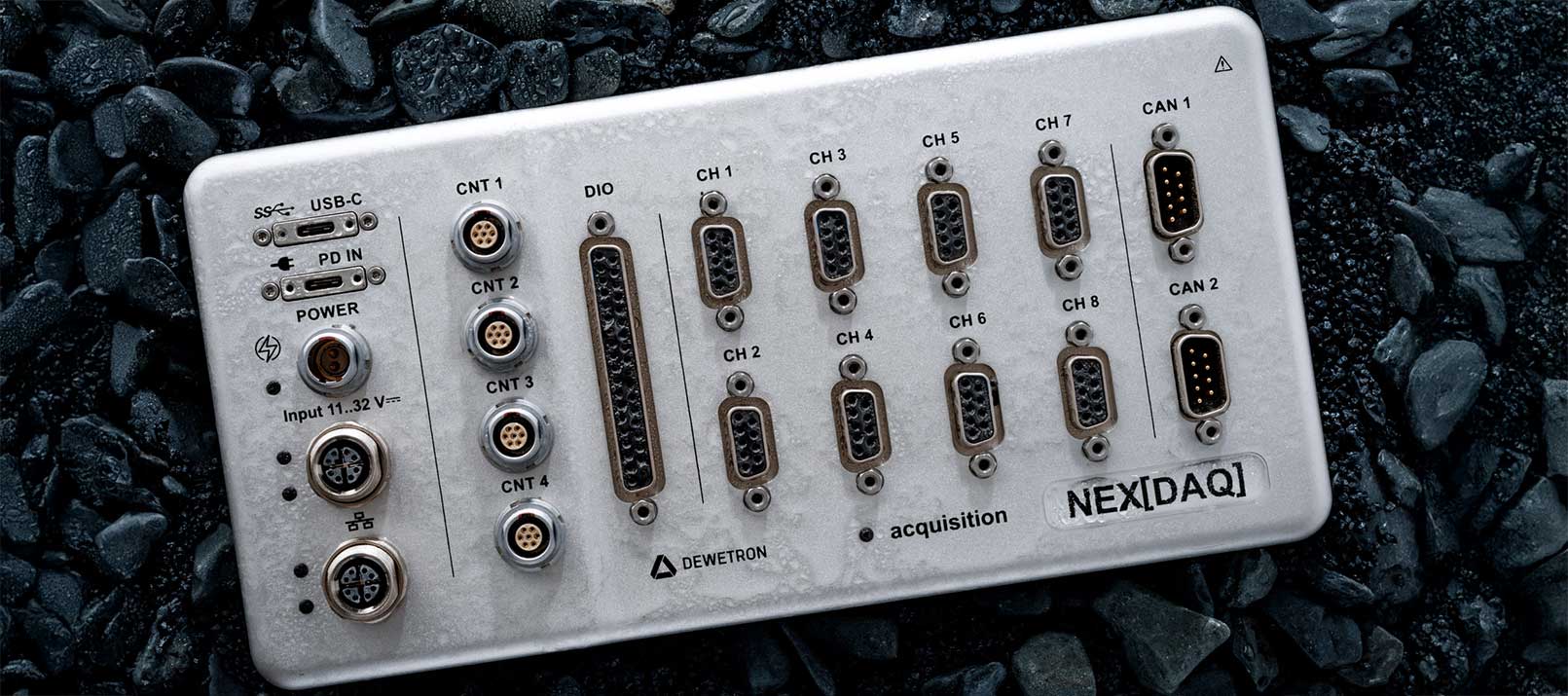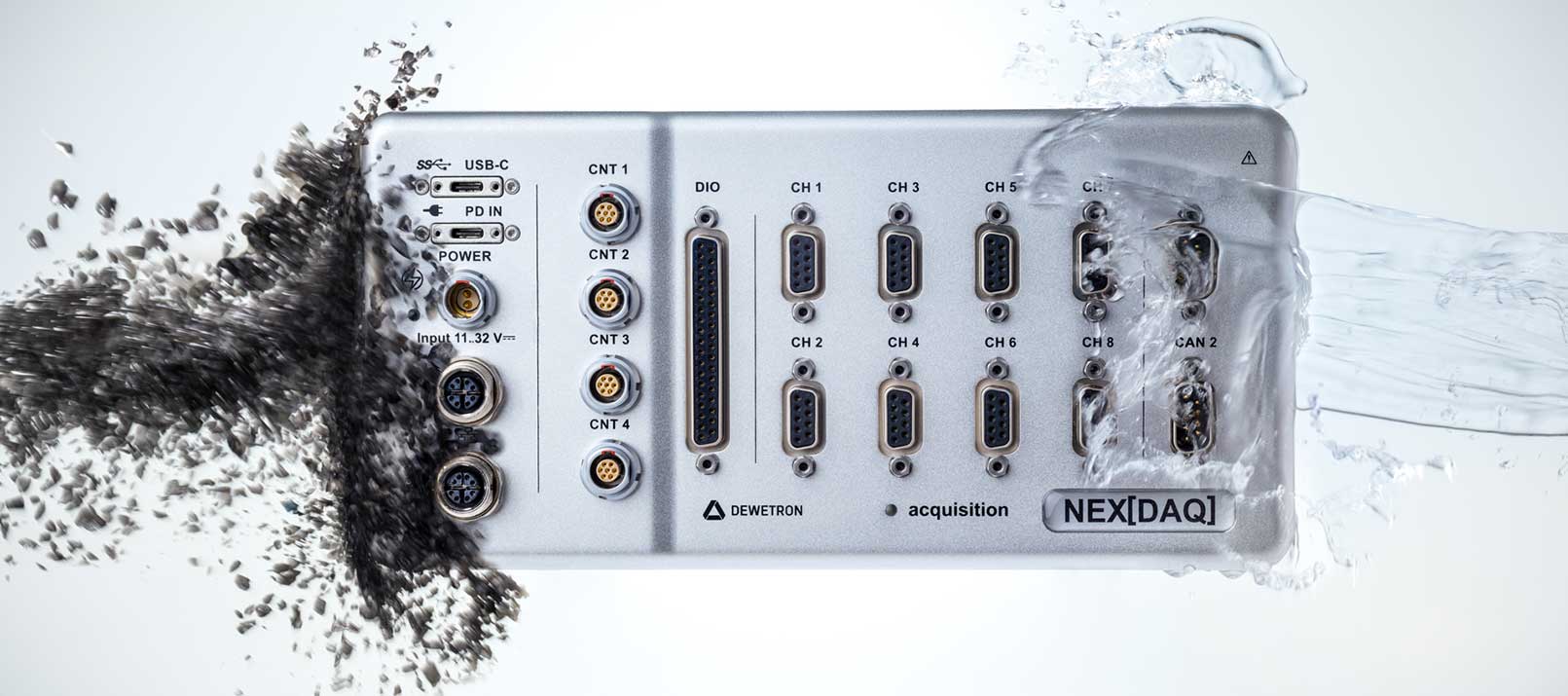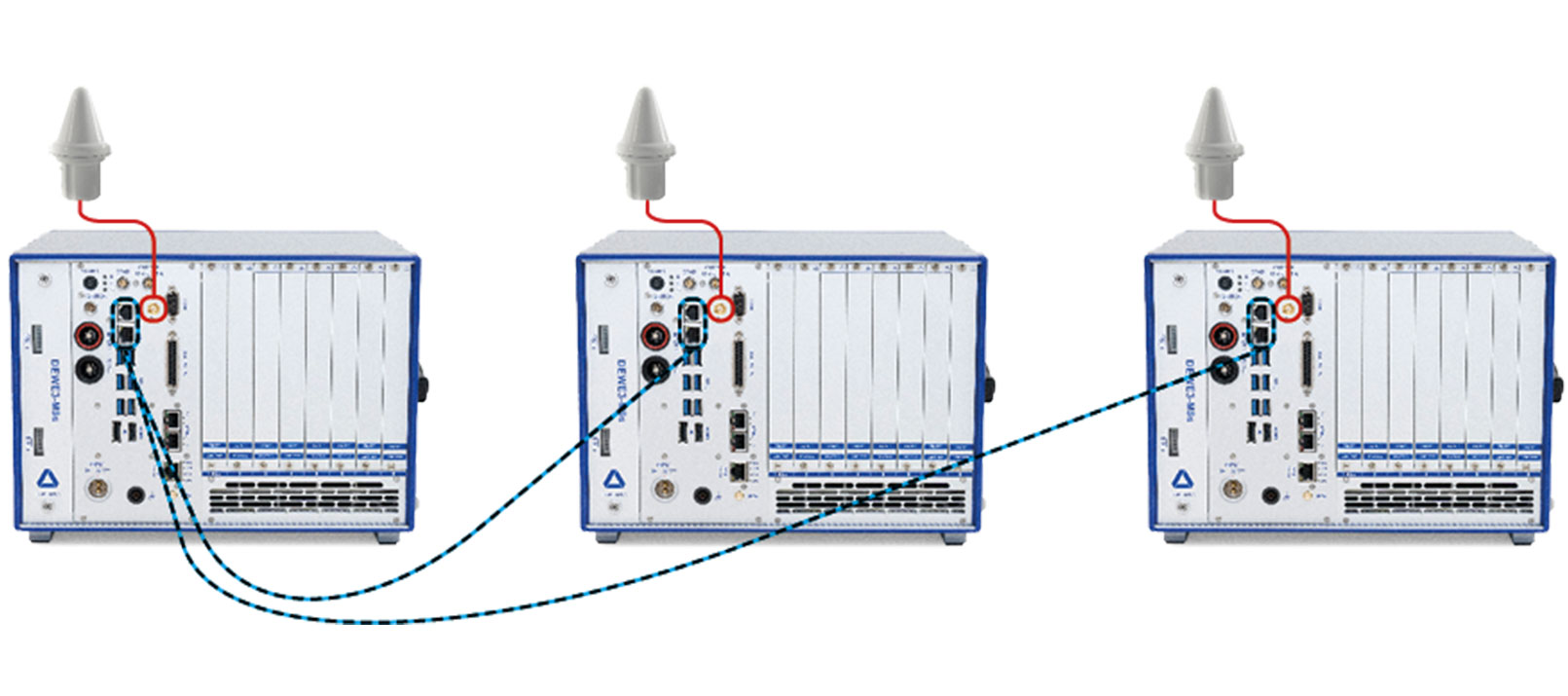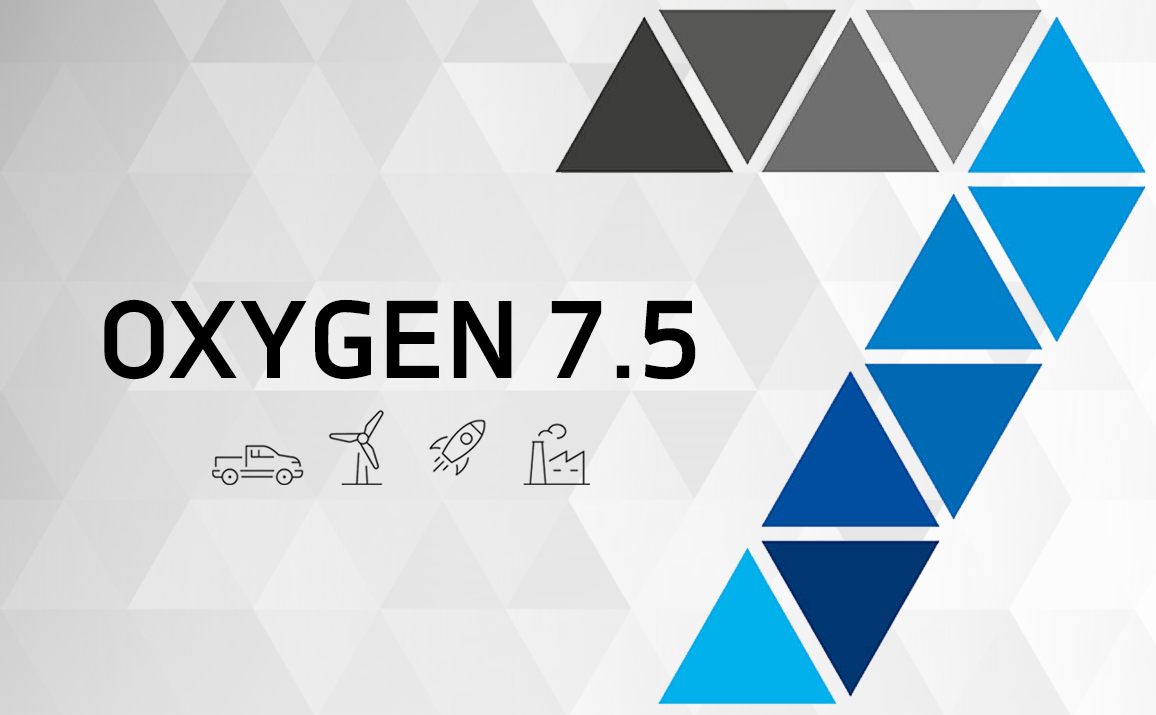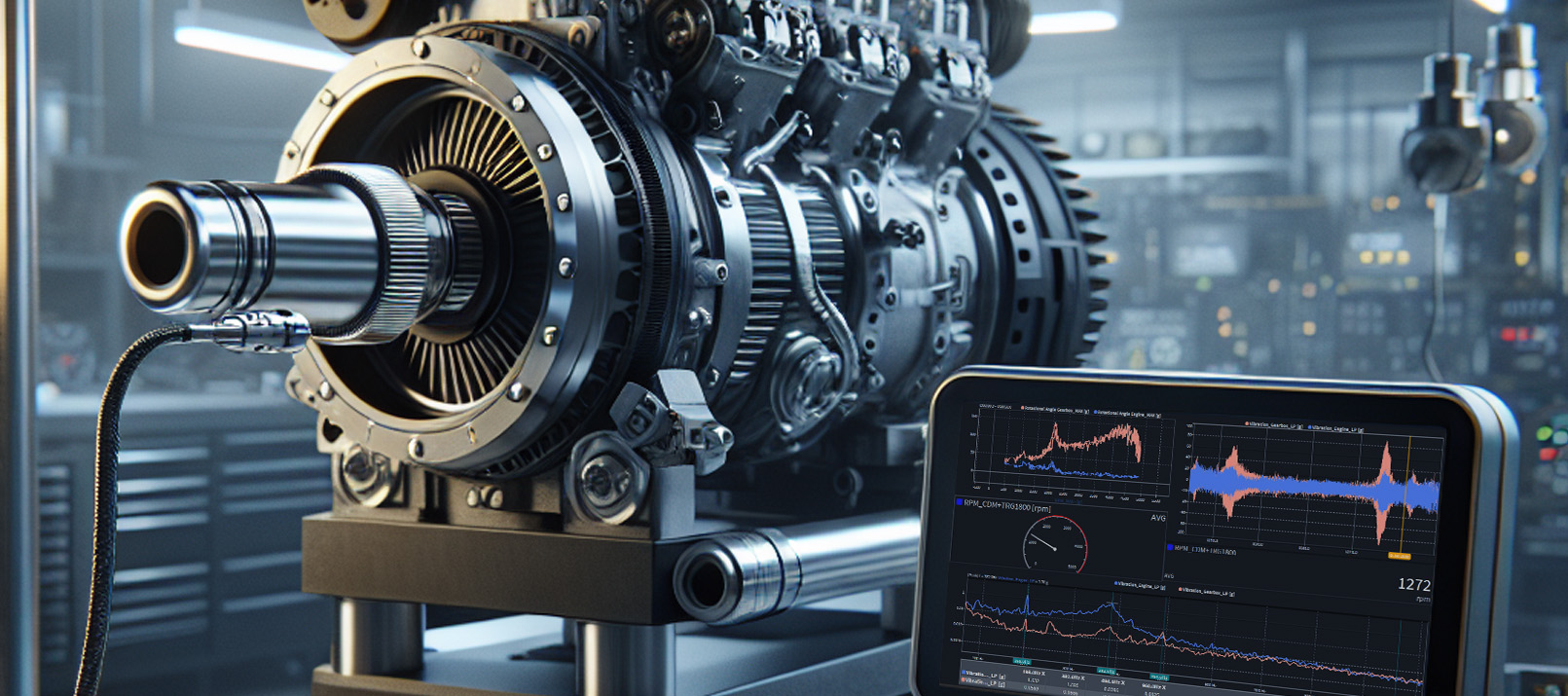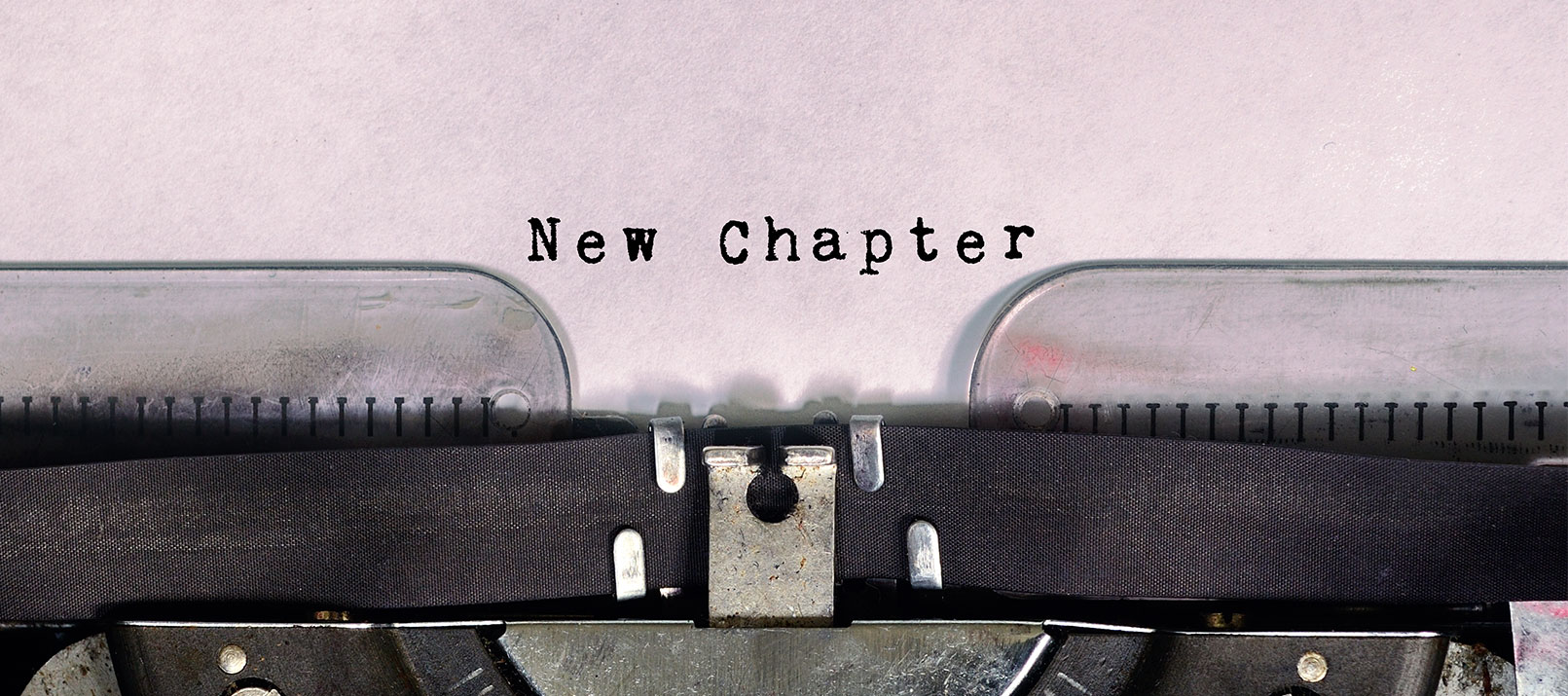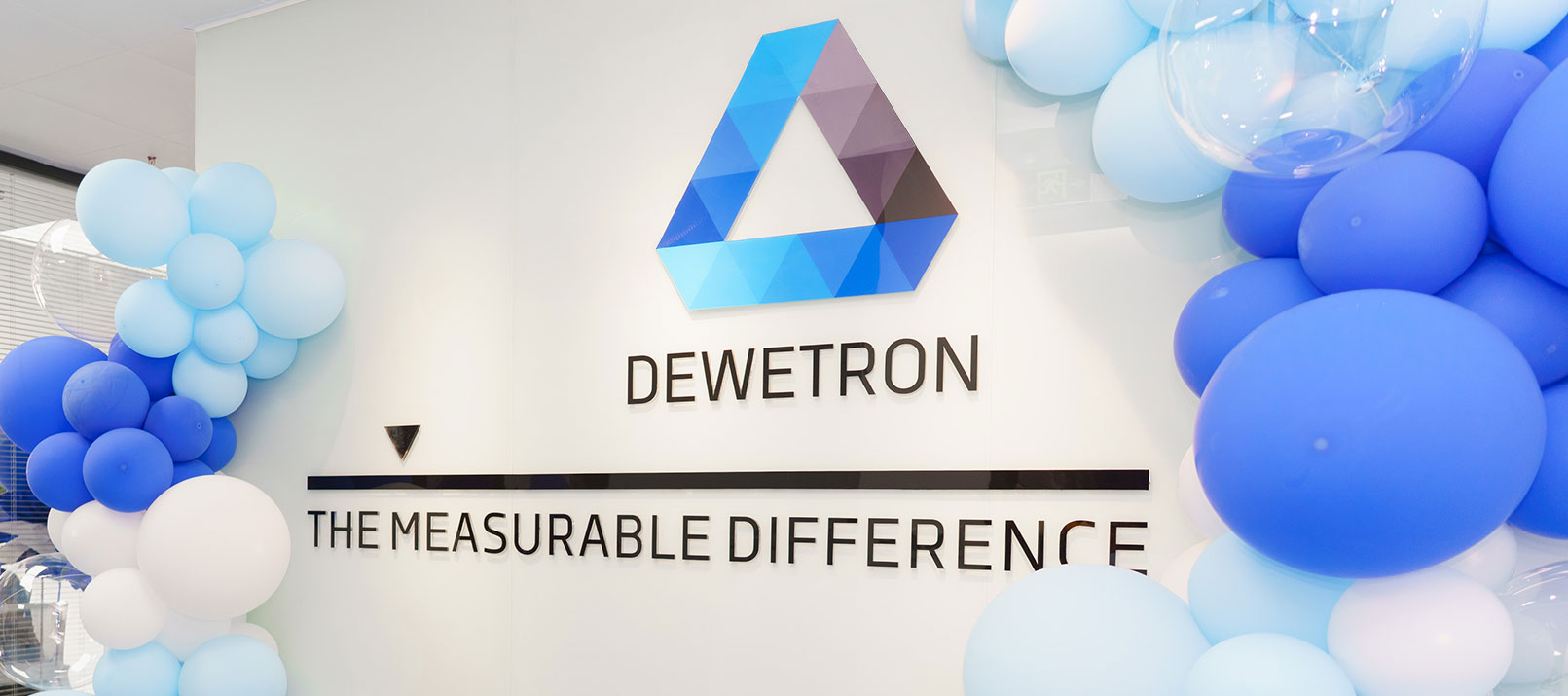What are IP codes?
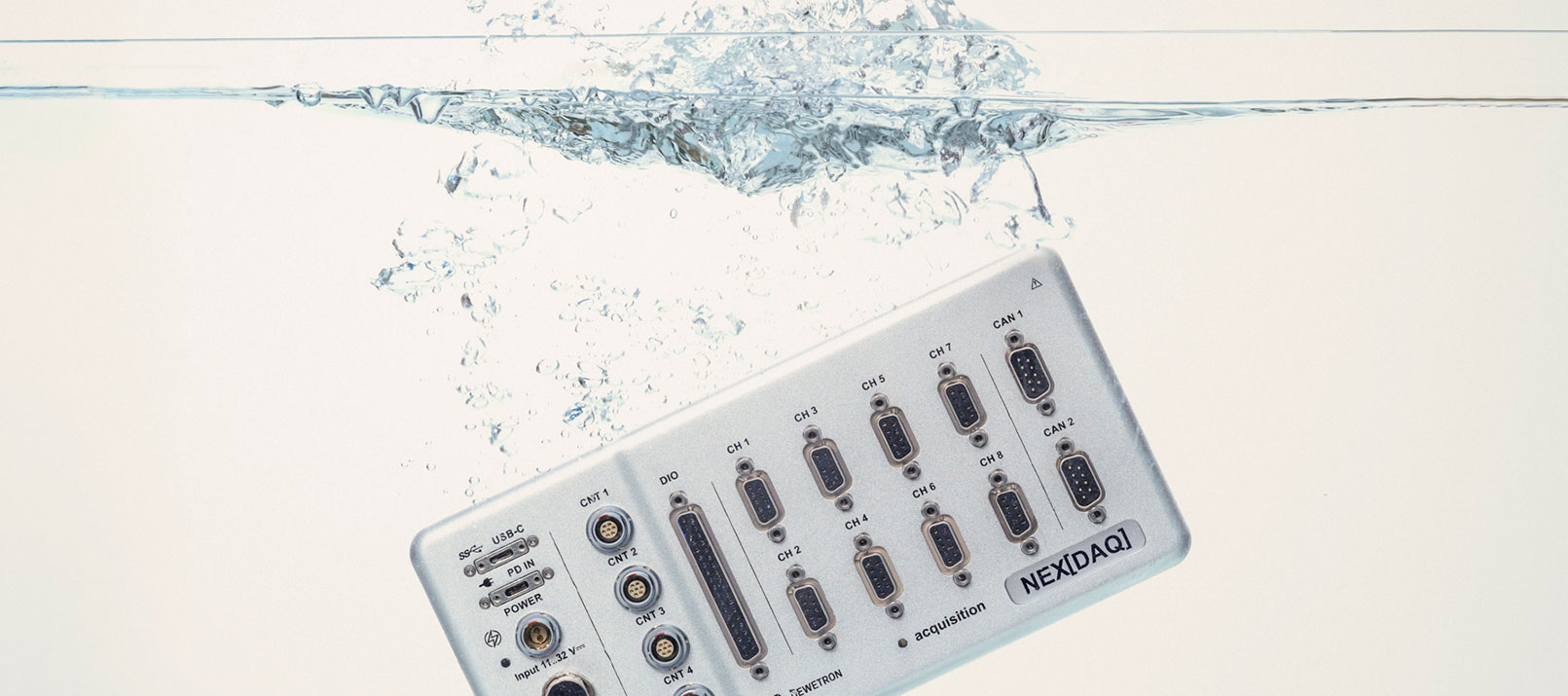
IP65, IP67, or IP68 – especially when buying smartphones, you increasingly come across these terms in recent years. These abbreviations stand for the respective IP protection class and thus how waterproof and dust-tight your device is. In this blog post, we will take a closer look at the IP code in general.
What is the IP code?
The ingress protection (IP) code is a rating system, which grades the resistance of an enclosure against the intrusion of dust or liquids. It was developed by the International Electronical Commission (IEC) and is defined in the IEC 60529 originally published in 1989.
The code is composed of the abbreviation “IP”, followed by two digits, plus potential additional and supplementary letters. Each digit and letter indicates a certain characteristic and level of protection or resistance. In case one of the two digits does not have to or should not be indicated, it is replaced by the letter X. The additional and supplementary letters at the end are optional and not required to be specified.
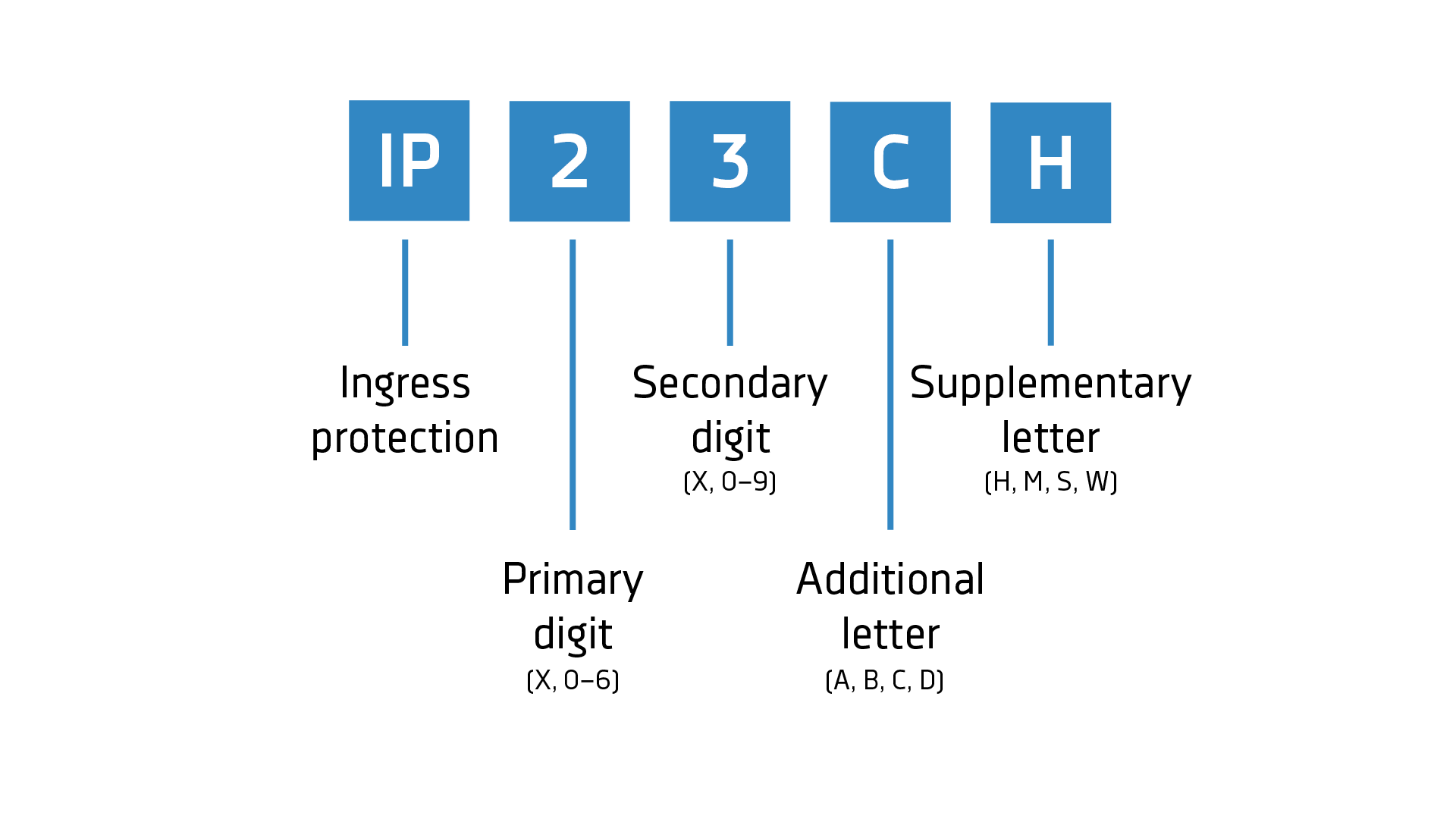
Primary digit
The primary digit indicates the degree of protection the enclosure provides against access to dangerous parts (e.g. rotating components, electrical conductors) and against the ingress of solid foreign objects (e.g. dust, sand). The higher the digit, the better the protection against foreign objects. The following table summarizes the six possible classifications for the primary digit:
| 1. digit | Protection against foreign bodies | Protection against contact |
| X | No data available to specify protection rating | No data available to specify protection rating |
| 0 | No protection | No protection |
| 1 | Protected against solid foreign bodies with a diameter ≥ 50 mm | Protected against access with the back of the hand |
| 2 | Protected against solid foreign bodies with a diameter ≥ 12.5 mm | Protected against access with a finger |
| 3 | Protected against solid foreign bodies with a diameter ≥ 2.5 mm | Protected against access with a tool |
| 4 | Protected against solid foreign bodies with a diameter ≥ 1.0 mm | Protected against access with a wire |
| 5 | Protected against dust in harmful quantities | Complete protection against contact |
| 6 | Dust-tight | Complete protection against contact |
Secondary digit
The second digit in an IP code indicates the degree of protection from moisture and water ingress. The higher the digit, the better the protection against ingress. All codes with the additional letter “K” at the end are defined by ISO 20653 (not by IEC 60529). This is a standard specified for road vehicles and provides additional protection criteria.
| 2. digit | Protection against liquids |
| X | No data available to specify protection rating |
| 0 | No protection |
| 1 | Protection against dripping water |
| 2 | Protection against falling dripping water when the enclosure is tilted up to 15° |
| 3 | Protection against falling spray water up to 60° from vertical |
| 4 | Protection against splashing water from all sides |
| 4K | Protection against splashing water from all sides with increased pressure |
| 5 | Protection against water jets (nozzle) from any angle |
| 6 | Protection against strong jets of water |
| 6K | Protection against strong jets of water under increased pressure, specified for road vehicles |
| 7 | Protection against temporary immersion |
| 8 | Protection against permanent immersion. Unless otherwise specified, protection is provided up to a water depth of 1 meter. Other water depths must be specified or agreed upon separately. |
| 9 | Protection against water during high-pressure/steam jet cleaning, specified for agriculture |
| 9K | Protection against water during high-pressure/steam jet cleaning, specified for road vehicles |
Additional letters
Additional letters describe the protection against access to dangerous active parts in more detail according to IEC 60529. They are optional and often not indicated.
| Code letter | Protection description |
| A | Protected against access to dangerous live parts with the back of the hand |
| B | Protected against access to dangerous live parts with a finger |
| C | Protected against access to dangerous live parts with a tool |
| D | Protected against access to dangerous live parts with a wire |
Supplementary letters
Similar to additional letters, supplementary letters specify protection characteristics more detailed according to IEC 60529.
| Code letter | Protection description |
| H | High-voltage equipment |
| M | Tested when moving parts are in operation |
| S | Tested when moving parts are at standstill |
| W | Tested under specified weather conditions |
Note: The letter K is specified in ISO 20653 and not in IEC 60529, therefore not mentioned in the table above.
What is the difference between IP67 and IP68?
IP67 and IP68 are certifications that are becoming increasingly common on a wide variety of products these days. Ranging from everyday tools like smartphones and watches, to industrial devices such as sensors and measuring tools. But what are now exactly the benefits of such devices?
According to the previously mentioned standards, an IP67-certified device is fully dust-tight, completely protected against contact, and protected against submersion to a limited extent. In particular this means that the device can be submerged in water up to 1 meter deep for 30 minutes and still remain functional.
IP68 takes it one step further. Just like IP67 devices, an IP68-certified device is fully dust-tight and completely protected against contact. In addition, it allows submersion in water deeper than 1.5 meters for an indefinite time. However, the exact depth of submersion must be specified individually by each manufacturer.
IP-certified devices at DEWETRON – NEX[DAQ] & XR-MODULES
In addition to IP-certified lifestyle products (smartphone, music box, watch…), which are probably better known to the general public, IP certifications are particularly important in the measurement technology industry.
In industries such as aerospace, outdoor maintenance, underwater work, tunnel construction etc., people work under harsh conditions, such as extreme temperatures, exposure to dust and sand, contact with water, snow, and moisture, and so on. It is a basic requirement that measurement systems remain functional and measure accurately and precise, even under these conditions. IP67/68-certified devices make exactly that possible.
With the NEX[DAQ] and our range of XR modules, also we at DEWETRON offer IP67/68 certified products. The NEX[DAQ] is a small, compact, and robust data acquisition system and the perfect “everyday tool” for test and validation engineers.
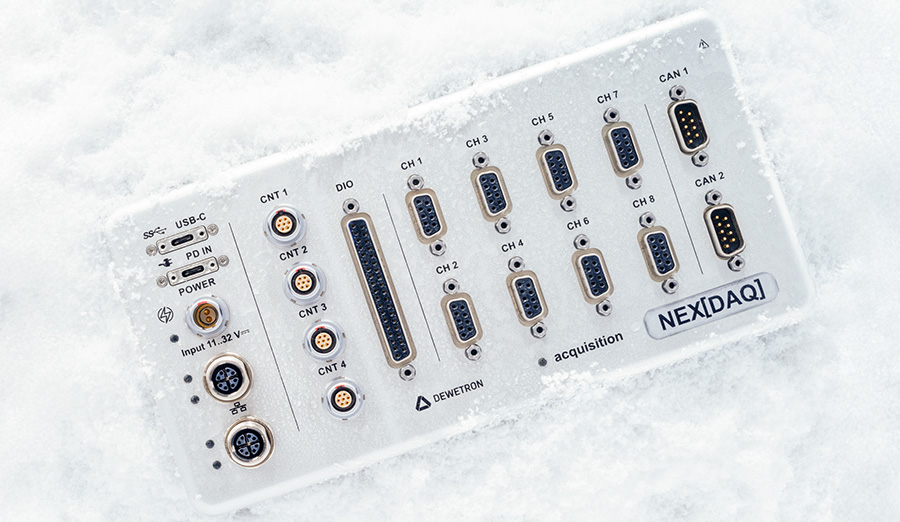
With its IP67 rating and extended operating temperature range of -20 °C to +70 °C it is the ideal device for use in climate chambers, high-temperature environments, and outdoor testing.
In case you already have an operational measurement system and only are looking for channel expansion, we suggest our XR series. Our XR modules are low-speed channel expansions perfect for temperature, voltage, current or resistance temperature measurements. They operate in an extended operating temperature range of -40 °C to +85 °C and with a IP68 rating they can be immersed up to a depth of 3 meters for an indefinite time.
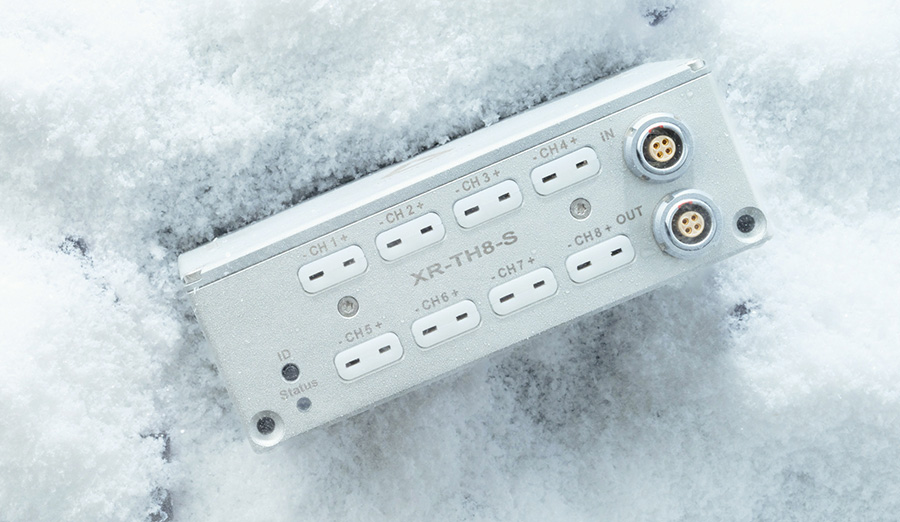
So, what is important to remember?
- The IP code is a rating system by the IEC, which grades how resistant a device is against dust and liquids.
- The code itself is divided into several digits: IP + primary digit + secondary digit + optional letters.
- IP67 and IP68-certified devices are dust and water-proof up to a specific depth of submersion for a designated amount of time.
